Breast Lift in Nepal
Search and Compare the Best Clinics and Doctors at the Lowest Prices for Breast Lift in Nepal
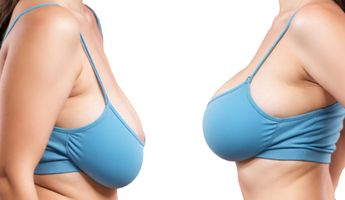
Find the best clinics for Breast Lift in Nepal
No clinics available
Czech Republic offers the best prices Worldwide
Price: $ 85

- Home
- Nepal
Compare Before & After Photos of _procedure_photos.phpBreast Lift
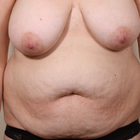
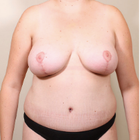
Front view
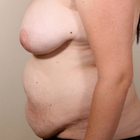
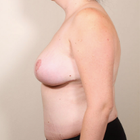
Full-side view

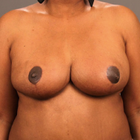
Front view
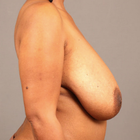
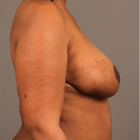
Full-side view
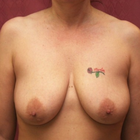
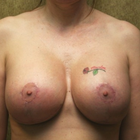
Front view
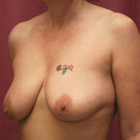
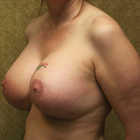
Half-side view
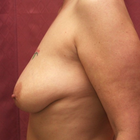
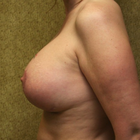
Full-side view
WHY US?
At Medijump, we're making medical easy. You can search, compare, discuss, and book your medical all in one place. We open the door to the best medical providers worldwide, saving you time and energy along the way, and it's all for FREE, no hidden fees, and no price markups guaranteed. So what are you waiting for?

Free

Best Price

Widest Selection

Risk-Free
What you need to know about Breast Lift in Nepal
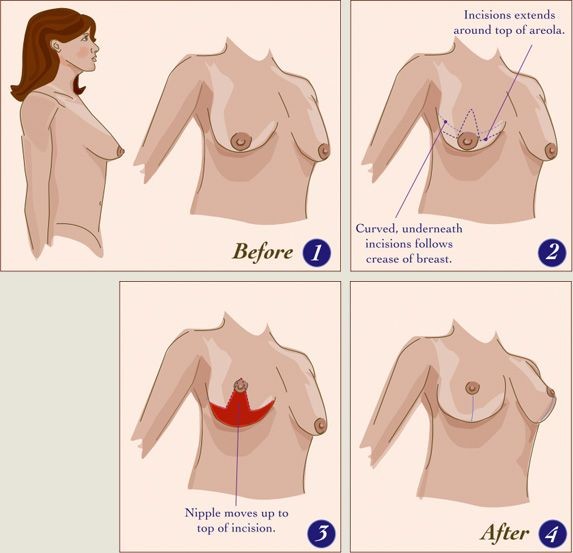
Commonly known as a Mastopexy, the breast lift is a surgical procedure to raise sagging breasts by modifying the contour and elevation. Breasts look saggy due to overstretched suspensory ligaments of cooper, excessive tissue, and skin. Lactation is also a cause of drooping breasts. During this procedure, a plastic surgeon removes excess skin and tighten the remaining tissue to create a more contoured and shapely breasts. Some patients may choose to have breast implants added as part of the procedure to give the breasts more volume.
After the surgery, you can expect to have round and elevated breasts. However, this surgery is not for everyone, you should talk to your doctor openly before opting for it. Your physical conditions and history are considered before going for surgery. Your surgeon will determine whether or not you are a good candidate for breast lift. For patients over the age of 40, a breast scan might be necessary.
A breast lift won't significantly change the size of your breasts. However, it can be performed in combination with breast augmentation or breast reduction.
What is the cost of Breast Lift in Nepal?
Due to a number of variables, including the complexity of the surgery, the surgeon's experience, and the location of the medical centre, the cost of the Breast Lift within Nepal may vary greatly. Typically, the anticipated cost might be hundreds of dollars.
However, it is important to emphasise that the cost should not come at the expense of the quality of healthcare, particularly when it comes to surgical procedures. For the greatest outcomes, it is advised to work with a reputed medical facility and communicate with a skilled surgeon.
What does a Breast Lift Procedure Involve?
A number of techniques are available for a breast lift. They differ in the location of incisions. The one suitable for you is chosen according to the condition of your breasts. The procedure begins with making you lay in the supine position. You are anesthetized, so that you may not suffer from pain during the surgery. After this, an incision is given around your areola descending down towards the crease where it runs horizontally. Stitches are given inside the breasts to suspend them. Excess tissue is removed. Sometimes, the size of your areola is decreased and nipples are shifted to a higher position. In most cases, the nipple-areola complex (NAC) is preserved to prevent damage to your lactational ability. After your surgeon removes exess skin, tissue, and fat, they put back the skin flap to its place and stitch the incision.
After the surgery, a bandage is applied over the operated area. You are then given a surgical bra to wear. Small tubes are placed near your incisions to drain any fluid or blood. These tubes are removed after several days.
How Long Should I Stay in Nepal for a Breast Lift Procedure?
Breast lift is a 2 to 3-hour procedure, after which you are moved from the operation theatre to a private recovery room. You are monitored for a few hours, and if everything goes fine you can go home on the same day, assuming no other surgeries were performed at the same time.
After being discharged from the hospital, you have to come for check-ups on a regular basis to ensure that nothing goes wrong. You should remain in Nepal for at least 7-10 days after the surgery. In this period, your incisions heal and stitches are removed. You can leave when told by your doctor.
What's the Recovery Time for Breast Lift Procedures in Nepal?
Plan to take 2 to 3 weeks off work for your breast lift surgery. There will be pain and swelling in the operated area and your breasts will appear swollen for almost 2 weeks. There will be redness and pain around your incisions. Your areola and nipple are likely to be numb for a few days.
In the early days, painkillers are given to help you with pain. You might have to wear surgical bras for 2 to 3 weeks, after which, you can wear regular bras. No underwire bras should be worn for at least 6 weeks.
What sort of Aftercare is Required for Breast Lift Procedures in Nepal?
Following points should be kept in mind to take care of yourself after being discharged from the hospital:
- Visit your doctor regularly for some time.
- Take your medicines as and when prescribed by the doctor.
- Follow a healthy diet plan for a better recovery.
- Ensure the presence of someone with you to look after you.
- Do not wear push up bras for 5 to 6 weeks after the surgery.
- Wear surgical bras in the early few days.
- Avoid excessive movement of your breasts.
- Do not take a bath as long as bandages are there. Wet bandages can be the cause of infection.
- Do not bend.
- Avoid sexual activity for at least 2 weeks.
- Do not lift heavy objects or kids. It can put stress on your stitches, removing them before due time.
What's the Success Rate of Breast Lift Procedures in Nepal?
According to a survey, 80% of women are satisfied by breast lift surgery. Their bust is restored, and sagginess disappeared. Most people experience long-lasting results, while others might need minor revisions after a few years.
For an in-depth analysis of the Breast Lift procedure with before and after images, watch this short video.
Are there Alternatives to Breast Lift Procedures in Nepal?
The following are some non-surgical alternatives to breast lift surgery:
- Padded bras: padded bras or push up bras give a rounded contour to your breasts without incisions. Bras lift your breasts up eliminating the droopy appearance. However, this is not a permanent method.
- Vampire breast lift: in this procedure, platelet-rich plasma (PRP) injections are given which restore your bust. This is a 20-minute procedure in which a numbing cream is applied onto your breasts. After they go numb, PRP along with hyaluronic acid is injected into your breasts. It tightens your breasts and lifts them up. Hyaluronic acid increases the efficacy of PRP.
- Laser treatment: high power laser is used to stimulate the growth of collagen. It only targets the outer layers of skin. Hence, rejuvenating the skin only.
- Caci bust treatment: a device releasing electrical impulses is moved over your breasts. It hydrates your skin and gives strength to the tissue. Improving the contour of your breasts.
- Botox: These injections are given into your chest muscles. As a result, these muscles relax. To compensate for these muscles, your back muscles contract, lifting your breasts higher. This can last for 3 to 4 months.
- Thermage: in this procedure, radio waves are used to tighten the skin of your bust. Production of collagen is stimulated which lifts the skin of your droopy breasts.
- Chest exercises: you can do different chest exercises to strengthen your chest muscles. It tightens the skin and raises your breasts. It is more effective if performed under the supervision of an instructor.
What Should You Expect Before and After the Procedure
The preliminary phase before the Breast Lift generally requires an exhaustive health evaluation, which includes a mammogram and the measurement of your breasts. The medical facility will recommend you to avoid drugs that could escalate the risk of bleeding, for instance, Aspirin. They may also request that you refrain from smoking since nicotine can hinder the recovery process.
Post Breast Lift, you are likely to be required to wear a healing bandage or post-surgical bra to reduce swelling and provide support to your breasts during the healing phase. It is possible that a slender tube may be inserted to eliminate any surplus blood or fluid. Normal post-procedure discomforts include pain, bruises, and swelling that can be effectively handled with prescribed pain medication. The medical facilities will issue comprehensive instructions regarding wound maintenance, medicine, and consequent appointments. Participating in arduous activities is advised against for approximately six weeks after the surgery.
Do note that personal experiences with the Breast Lift can vary slightly. The duration of the healing process and the ultimate outcome heavily rely on personal health conditions, lifestyle practices, and compliance with instructions after the operation.
What are Potential Risks of Breast Lift?
There are, however, risks and side effects you need to be aware of. Some of these risks include:
- Infection
- Bleeding
- Scarring
In rare cases, the surgery might not be successful. Failed surgeries leave marks on your breasts which can be subjected to hypertrophy. Also, there might be a difference in the shape of both breasts. In these cases, revisional breast lift surgery is performed
Whilst the information presented here has been accurately sourced and verified by a medical professional for its accuracy, it is still advised to consult with your doctor before pursuing a medical treatment at one of the listed medical providers
No Time?
Tell us what you're looking for and we'll reachout to the top clinics all at once
Enquire Now

Popular Procedures in Nepal
Prices Start From $208

Prices Start From $89

Prices Start From $931

Prices Start From $76

Recommended Medical Centers in Nepal for procedures similar to Breast Lift

- Interpreter services
- Translation service
- Religious facilities
- Medical records transfer
- Medical travel insurance
- Health insurance coordination
- TV in the room
- Safe in the room
- Phone in the room
- Private rooms for patients available

- Interpreter services
- Translation service
- Religious facilities
- Medical records transfer
- Medical travel insurance
- Health insurance coordination
- TV in the room
- Safe in the room
- Phone in the room
- Private rooms for patients available

- Interpreter services
- Translation service
- Religious facilities
- Medical records transfer
- Medical travel insurance
- Health insurance coordination
- TV in the room
- Safe in the room
- Phone in the room
- Private rooms for patients available

- Interpreter services
- Translation service
- Religious facilities
- Medical records transfer
- Medical travel insurance
- Health insurance coordination
- TV in the room
- Safe in the room
- Phone in the room
- Private rooms for patients available
Breast Lift in and around Nepal
Introduction
Nepal is a country in South Asia, sandwiched between India and China. Home to the mighty Mount Everest, this incredible country has diverse landscapes, from the Himalayan Mountains in the north to the sprawling plains in the south. Towering mountains, charming hill villages, golden mountains, and jungle wildlife, Nepal is truly one of the world’s best travel destinations. Beyond its nature and culture, this country is also increasingly popular for its healthcare. With its affordable high-quality medical facilities, Nepal is considered to have immense potential for medical tourism, due to the availability of good infrastructure, highly trained specialists, modern medical equipment, and relatively cheaper medical treatment. In fact, it’s currently the fastest-growing segment of the country’s tourism. Medical tourists coming to Nepal are usually seeking exceptionally high medical treatment at competitive rates. Some of the most sought after procedures are dental treatments, cardiac services, and neurological treatments.
Popular Cities and Regions in Nepal
Kathmandu, the capital and largest city in Nepal, is historic, enticing, spiritual, and vibrant. One of the most famous attractions in the city is the old town, where tourists can find the most popular Tibetan pilgrimage site, the Kathesimbhu Stupa. Another top attraction is Kumari Bahal, which is the home of the Kumari, the girl who is selected to be the town’s living symbol of Devi. Tourists looking to relax in a more laid-back vibe usually go to Pokhara. Stretching along the shore of an idyllic lake, it offers spectacular scenery. It also boasts a thriving adventure-sports industry, from paragliding to paddle boats. Anyone who wants to experience an ancient way of life should visit Bhaktapur, which is filled with artisan weave cloths, amazing cuisine, and beautiful temples.
Transport in Nepal
The main international airport in Nepal is Tribhuvan International Airport, which serves flights to and from numerous cities in Asia, such as Delhi, Hong Kong, and Dubai. Getting around the country can be a challenge, but public transportation is available. Buses are affordable, however, they tend to be overloaded. Tourist buses are the best way to travel around as they are in good condition.
Visas in Nepal
Citizens of India do not need a visa to enter Nepal without restrictions. Citizens of almost all nations, including the US and all EU countries, can obtain a visa on arrival that is valid for up to 90 days. Only holders of passports from 12 countries, need to have a visa in advance.
Weather in Nepal
Nepal has five seasons. Spring starts in March until May, it offers pleasant weather that is not too cold nor too hot. Summer arrives in June and ends in August, bringing hot temperatures of around 28°C. Monsoon from June to September receives rain almost every day. Autumn and pre-winter bring sunny and pleasant weather, while winter can be very cold.
Additional Info
-
Local Currency: Nepali rupee (NPR) is the official currency. 1 USD converts to 115 NPR.
-
Money & Payments: ATMs are available in major cities, such as Kathmandu and Pokhara. Credit cards are accepted in major hotels and restaurants. Tipping is expected.
-
Local Language: The official language is Nepali. English is mainly spoken in tourism areas.
-
Local Culture and Religion: Hinduism and Buddhism coexist in Nepal peacefully. Islam, Kiratism, and Christianity are in the minority.
-
Public Holidays: Some of the most celebrated public holidays are Maha Shivaratri, Buddha Jayanti, Sambidhaan Diwas, and Bhaitika.
Popular Searches
- Plastic Surgery in Thailand
- Dental Implants in Thailand
- Hair Transplant in Thailand
- Breast Augmentation Thailand
- Gastric Sleeve in Thailand
- Gender Reassignment Surgery in Thailand
- Laser Hair Removal in Bangkok
- Botox in Bangkok
- Dermatology in Bangkok
- Breast Augmentation in Bangkok
- Coolsculpting in Bangkok
- Veneers in Turkey
- Hair Transplant in Turkey
- Rhinoplasty in Turkey
- Stem Cell Therapy in Mexico
- Rhinoplasty in Mexico
- Liposuction in Mexico
- Coolsculpting in Tijuana
- Rhinoplasty in Korea
- Scar Removal in Korea
- Gastric Sleeve in Turkey
- Bone Marrow Transplant in India
- Invisalign in Malaysia
- Plastic Surgery in the Dominican Republic
- Tummy Tuck in the Dominican Republic
- Plastic and Cosmetic Surgery in Poland
- Rhinoplasty in Poland
- Hair Implant in Poland
- Dental Implants in Poland
- IVF in Turkey